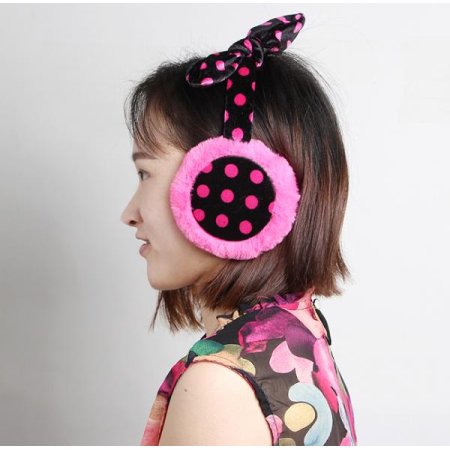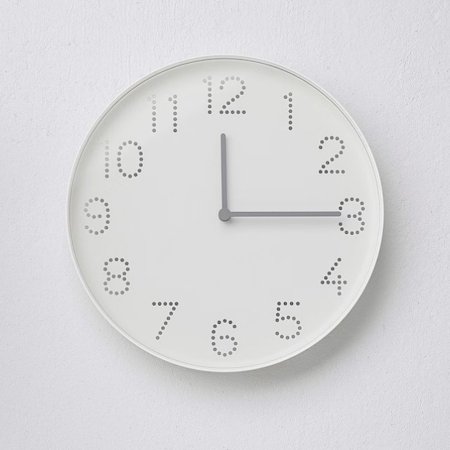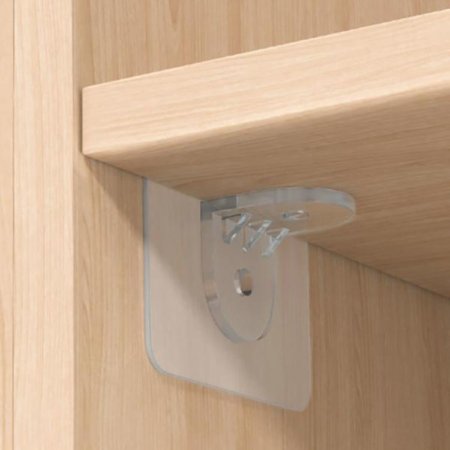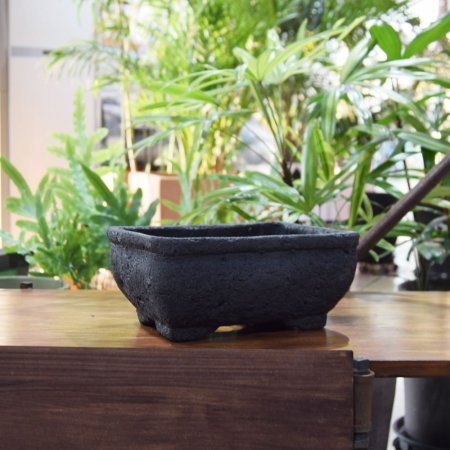[문화재청](국영문 동시 배포) 문화재청 · 국립중앙박물관, 새로 지정된 국보 · …
정책
0
144
0
2020.07.20 09:40

문화재청(청장 정재숙)은 국립중앙박물관(관장 배기동)과 함께 <새 보물 납시었네 - 新국보보물전 2017~2019>를 7월 21일부터 9월 27일까지 국립중앙박물관에서 개최한다.
이번 전시는 지난 2017년부터 2019년까지 3년간 새롭게 지정된 국보와 보물 157건 중 이동이 어려운 건축 문화재와 중량이 무거운 문화재 등을 제외한 83건 196점을 공개하는 자리로, 국보와 보물 공개 전시로는 사상 최대 규모다.
이번 전시를 위해 문화재를 대여해준 기관과 개인, 사찰 등 대여 기관만 해도 총 34곳이나 되는 만큼, 평소에 한자리에서 보기 힘들었던 우리 문화를 대표하는 다양한 종류의 국보와 보물이 공개될 예정이다
전시는 ▲ 역사를 지키다, ▲ 예술을 펼치다, ▲ 염원을 담다 등 3가지 주제로 구성된다.
▲ 1부 ‘역사를 지키다’는 우리 역사를 살펴볼 수 있는 다양한 기록 유산을 소개하는 공간이다. 전시에는 국보로 승격된『삼국사기』(국보 제322-1호, 옥산서원 소장)와 『삼국유사』(국보 제306-3호, 연세대학교 소장)를 비롯하여 조선 태조부터 철종까지 472년의 역사를 기록한『조선왕조실록』(국보 제151호, 국립고궁박물관·국립중앙박물관·서울대학교 규장각 한국학연구원·한국학중앙연구원 소장) 등 다양한 역사기록물이 출품됐다. 특히, 실록이 지닌 위대한 가치를 전하기 위해 실록의 편찬에서 보관, 현재에 이르기까지 다양한 내용을 상세히 전시장에 담았다.
조선 시대 인쇄 문화의 발전을 보여주는 『송조표전총류 권6~11』(보물 제1989호, 개인 소장), 그림을 기록의 수단으로 적극적으로 활용한 왕실 행사 기록화 『기사계첩』(국보 제325호, 국립중앙박물관 소장), 사대부의 얼굴이 사실적으로 묘사된 『최석정 초상 및 함』(보물 제1936호, 국립청주박물관 소장) 등이 함께 소개되어 우리나라 기록 문화의 다양성과 우수성을 선보인다.
▲ 2부 ‘예술을 펼치다’는 이 땅에 살았던 사람들의 미의식이 담긴 예술품을 다양하게 감상할 수 있는 공간이다. 고려 초기의 청자 제작을 보여주는 <청자‘순화4년’명 항아리>(국보 제326호, 이화여자대학교 소장), 고려 상형청자의 정수라고 할 수 있는 <청자 투각연당초문 붓꽂이>(보물 제1932호, 국립중앙박물관 소장) 등 한국 도자 공예의 뛰어난 기술과 절제된 아름다움을 보여주는 고려청자들도 선보인다.
우리 강산의 모습을 담은 조선 시대 실경산수화와 풍속화는 우리에게 과거로의 시간여행을 안내하는 친절한 길잡이가 될 것이다.
실경산수화의 대가 정선(鄭敾, 1676~1759)의 <정선 필 풍악내산총람도>(보물 제1951호, 간송미술문화재단 소장) 등에서는 시적 정취가 가득한 우리 강산의 풍경을 감상할 수 있다.
<김득신 필 풍속도 화첩>(보물 제1987호, 간송미술문화재단 소장)에서는 조선 시대 사람들의 평범한 일상을 만날 수 있다. 이밖에 전체 길이가 8.5m에 달하는, 조선시대 사람들이 꿈꾸던 이상향을 그린 <이인문 필 강산무진도>(보물 제2029호, 국립중앙박물관 소장), 학예일치의 경지를 보여주는 김정희(金正喜, 1786~1856)의 <김정희 필 난맹첩>(보물 제1983호, 간송미술문화재단 소장) 등도 볼 수 있다.
특히, 이번 전시에는 여인의 아름다움이 섬세하게 묘사된 <신윤복 필 미인도>(보물 제1973호, 간송미술문화재단 소장), 천재 화가 김홍도의 원숙한 기량을 보여주는 <김홍도 필 마상청앵도>(보물 제1970호, 간송미술문화재단 소장) 등 간송미술문화재단이 소장한 22건의 보물이 전시된다.
일제강점 암흑기에 사재(私財)를 털어 우리 문화유산을 지켜낸 간송 전형필(1906~1962)의 유지를 지키고 있는 간송미술문화재단 소장 문화재가 이처럼 한 번에 다량으로 대여 전시되는 것은 이번이 처음이다. (단, 간송미술문화재단 소장 서화류는 3주 단위로 교체전시되므로, 세부일정을 확인해야 한다.)
▲ 3부 ‘염원을 담다’는 우리나라 국보·보물의 절반이 넘는 불교문화재의 위상을 살펴볼 수 있다. 불교는 오랜 세월 한국인과 함께하면서 현실의 어려움을 극복하도록 도와주며 문화를 풍요롭게 해준 정신적인 토대였다. 사람들은 삶의 괴로움에서 벗어나 부처의 나라에 태어나기를 꿈꾸었다.
그 간절한 염원을 위해 사찰을 세우고 탑을 건립하며 법당에 불상과 불화를 봉안하고 경전을 간행했으며, 사리장엄구에는 개인과 왕실의 안녕을 바라는 발원자의 염원을 담았다. 가장 오래된 사리장엄구인 <부여 왕흥사지 출토 사리기>(국보 제327호, 국립부여문화재연구소 소장)는 백제 시대 불교 신앙과 정교한 공예 기술의 극치를 보여준다.
* 사리장엄(舍利莊嚴): 사리를 담는 그릇인 사리기(舍利器), 사리기 등을 넣는 사리감(舍利龕), 사리기와 함께 봉안되는 각종 공양품 등을 아울러 이름
불교 경전을 인쇄하기 위해 새긴 <묘법연화경 목판>(보물 제1961호, 개심사 소장), <선림보훈>(보물 제700-2호, 충주박물관 소장)·<상교정본자비도량참법 권3>(보물 제875-3호, 달마사 소장), 세종이 소헌왕후의 명복을 빌기 위해 지은 찬불가인 <월인천강지곡 권상>(국보 제320호, 개인 소장) 등 불교 경전과 서적에서는 우리나라 불교 기록문화의 면면을 살펴볼 수 있다.
그리고 <고려 천수관음보살도>(보물 제2015호, 개인 소장), <남양주 불암사 목조관음보살좌상>(보물 제2003호, 불암사 소장) 등 불화와 불상도 함께 소개된다. 이번 전시에는 (재)대한불교조계종 산하 9개 사찰이 출품에 협조하였다.
전시 도입부에는 관람객들이 본격적인 관람에 앞서 시민과 전문가로 구성된 대담 영상 <보물을 생각하다>를 볼 수 있다. 국보와 보물하면 떠오르는 단어 생각하기, ‘내가 생각하는 미래의 문화유산’이라는 질문에 대한 이어령 전 문화부 장관, 신병주 건국대학교 교수, 배우 이순재 등과 일반 시민들의 생각을 담은 영상은 관람객들에게 문화유산의 가치와 그 의미를 다시 한 번 생각해보는 기회가 될 것이다.
전시장에는 다양한 체험 행사도 마련되었다. 1부 전시장에는 검색화면용 탁자를 설치해『조선왕조실록』을 흥미로운 주제별로 나누어 관람객이 직접 선택해서 검색해 볼 수 있게 했다. 검색한 자료는 물에 씻기듯 사라지는데, 조선 시대에 실록 편찬이 끝나면 훗날의 시시비비를 막기 위하여 초고(草稿)를 물에 씻어 없앴던 세초(洗草) 과정을 상상해보는 효과를 주기 위한 연출이다.
2부에서는 <이인문 필 강산무진도>(보물 제2029호, 국립중앙박물관 소장)와 <심사정 필 촉잔도권>(보물 제1986호, 간송미술문화재단 소장)을 별도 전시하는 공간의 배경에 46억 화소로 스캔(scan)한 <이인문 필 강산무진도>를 30m 길이의 장대한 크기로 펼쳐 작품에 대한 감동을 더해준다. 소리 예술가 김준이 구현한 15채널로 구성된 생생한 자연의 소리가 어우러져 마치 그림 속 강산에 직접 와있는 듯 현장감을 느낄 수 있을 것이다.
3부에서는 이번 전시 공간에 함께 소개되지 못한, 국보나 보물로 새롭게 지정된 사찰, 누정 등 건축문화재와 대형 괘불의 생생한 영상을 상영하여 전시의 입체감을 더했다.
이번 전시에서는 코로나19 확산 방지를 위한 ‘생활 속 거리두기’실천을 위해 온라인 예약 시스템을 도입하여 오전 10시부터 오후 6시까지, 2시간 단위로 관람 인원을 200명으로 제한한다.
전시장을 직접 찾지 못하는 관람객을 위해 매주 전시 장면과 주요 전시품 등을 담은 다양한 주제의 온라인 전시를 국립중앙박물관 누리집(www.museum.go.kr)과 국립중앙박물관 사회관계망서비스(SNS)에 소개하고, 문화재청이 선정한 주요 전시품 30건의 온라인 전시를 21일부터 다음 갤러리(https://gallery.v.daum.net/p/premium/newnationaltreasure)에서 열 예정이다. 특히, 정재숙 문화재청장과 배기동 국립중앙박물관장이 직접 국보와 보물을 설명하는 영상도 공개된다.
* 국립중앙박물관 사회관계망서비스(SNS)계정
트위터: https://twitter.com/The_NMK
인스타: https://www.instagram.com/nationalmuseumofkorea/
블로그: https://blog.naver.com/100museum
페이스북: https://www.facebook.com/NationalMuseumofKorea/
유튜브: https://www.youtube.com/user/koreanmuseum
국보와 보물의 궁금증을 풀어줄 온라인 강연회도 3회(7.29./8.5./8.13.) 마련하였다. 국립중앙박물관 유튜브(www.youtube.com/user/koreanmuseum)에서 실시간으로 생중계할 계획이며, 평소 궁금하게 여겼던 국보와 보물에 대한 궁금증을 강사와 실시간으로 소통하며 해소할 수 있을 것이다.
한편, 이번에 출품되는 전시품 가운데 10선을 온라인에서 직접 자신만의 새로운 국보와 보물로 재현해보는 ‘새 보물 패러디 챌린지’ 온라인 행사도 시행해 매주 월요일 3명의 당첨자에게 소정의 상품을 증정한다.
이번 전시는 우리 문화재의 우수성과 아름다움을 대표하는 국보와 보물을 국민에게 공개하여 함께 그 가치를 누릴 수 있도록 우리 문화유산의 보존, 관리와 활용 정책을 담당하는 대표적인 두 국가기관인 문화재청과 국립중앙박물관이 공동으로 기획하였다.
2017년에 처음 개최했던 특별전 <선인들의 마음, 보물이 되다-신국보보물전 2014~2016> 이후 문화재청과 국립중앙박물관이 3년 만에 힘을 합쳐 마련한 자리인 만큼 우리 문화유산의 소중한 가치와 의미를 생각해보는 자리가 되기를 기대한다.
아울러 코로나19로 인해 힘들고 지친 사람들에게 옛 선현들의 지혜가 담긴 국보와 보물이 따뜻한 위로가 되길 바란다.
* 전시기간은 코로나19 상황으로 변경될 수 있습니다. 방문 시 국립중앙박물관 누리집(www.museum.go.kr) 공지사항을 확인해 주시기 바랍니다.
New Treasures and National Treasures Gathered for Public Viewing
In collaboration with the National Museum of Korea, the Cultural Heritage Administration is organizing an exhibition to be held at the National Museum from July 21 to September 27 displaying cultural artifacts that have been entered onto the list of Treasures and National Treasures over the three-year period from 2017 through 2019.
The exhibition features 83 new entries composed of 196 total items, making it the largest-ever public display of Treasures and National Treasures.While 157 Treasures and National Treasures were newly designated during this period, architectural elements and other heavy or immovable properties had to be excluded.
Thirty-four individual and institutional heritage ownerscooperated bylendingtheir precious collections to the exhibition, allowing the creation of this magnificent opportunity to appreciate such a vast range of Treasures and National Treasures within a single space. The exhibition consists of three sections organized according to distinctive themes―Preserving History, ArtisticExpression, and Opening the Heart.
The first part (Preserving History) presents an array of documentary heritage items testifying to the history of Korea. Among them areprecious documents such as Samguksagi (History of the Three Kingdoms; National Treasure No. 322-1; collected at the Oksan Neo-Confucian Academy), Samgukyusa(Memorabilia of the Three Kingdoms; National Treasure No. 306-3; collected at Yonsei University), and Joseon wangjosillok(The Annals of the Joseon Dynasty; National Treasure No. 151; collected at the National Palace Museum, National Museum, Kyujanggak Institute for Korean Studies, Academy of Korean Studies). History of the Three Kingdoms and Memorabilia of the Three Kingdoms were promoted from Treasure to National Treasurestatus,and more volumes were added to the existing assemblage of books collectively designated as TheAnnals of the Joseon Dynasty. The Annals of the Joseon Dynasty,consisting of thousands of volumes,is detailed record of the 472 years of history from the reign of Joseon's founder (King Taejo) to its 25th ruler (King Cheoljong). The story of this invaluable documentary heritage is also presented at the exhibition, detailing the process of its publication, historical management, and its distribution.
Also included are examples of the diversity of Korean's documentation culture, such as Volumes 6?11 of Songjopyojeonchongnyu(Collection of Letters and Appeals to the Emperors of the Song Dynasty; Treasure No. 1989; private ownership), which offers evidence of the advanced printing technology of Joseon; Gisa gyecheop(Album of Paintings of the Gathering of the Elderly; National Treasure No. 325; National Museum), an illustrated record of a royal event demonstrating how the Joseon court actively employed painting as a means of record-keeping; andPortrait of Choi Seok-jeong and its case (Treasure No. 1936; Cheongju National Museum), showing a realistic depiction of a Joseon scholar.
The second part (Artistic Expression) offers a diverse range of artifacts displaying traditional Korean aesthetics. Exhibits include celadon pieces testifying to the era’s lofty pottery skillsand the traditional focus on unpretentious beauty. The celadon jar with the inscription of the fourth Sunhwa year (National Treasure No. 326; EhwaWomans University) exemplifies early-Goryeo celadon production. The celadon brush holder with openwork lotus and scroll design (Treasure No. 1932; National Museum of Korea) is one of the best examples of figurative ceramic wares from the Goryeo period.
The exhibition also features a selection of real-view landscapes and genre paintings from Joseon, offering a vivid view of the culture and nature of the time. A Comprehensive View of the Inner Side of Mt. Geumgangsan in Autumn (Treasure No. 1951; Kansong Art Museum) by JeongSeon, Korea’s foremost real-view landscape painter, presents a poetic version of the Korean landscape. Kim Deuk Sin's album of genre paintings delivers images of the everyday lives of the people of Joseon(Treasure No. 1987; Kansong Art Museum). Also included is Streams and Mountains without End (Treasure No. 2029; National Museum of Korea) by Yi In-mun, a stunning 8.5-meter-long depiction of the ideal world of which Joseon-era people dreamed. Kim Jeong-hui's album of orchid paintings and calligraphic works (Treasure No. 1983; Kansong Art Museum) provides a superb manifestation of the integration of scholarly and artistic pursuits.
The 22 Treasures collected at the Kansong Art Museum that are displayed at this exhibitiondeserve special attention. They include Beauty by Sin Yun-bok (Treasure No. 1973), a delicate depiction of a beautiful woman of its time, and Mounted Scholar Listening to a Nightingale by Kim Hong-do (Treasure No. 1970), an eloquent demonstration of the painter's artistic genius. This is the first time such a large collection of pieces has been lent out by the KansongArt Museum, a private organization established by the art collector Jeon Hyeong-pil while he was exhaustinghis personal fortune safeguarding Korean cultural heritage during the perilous era of Japanese colonial rule. (The paintings and calligraphic works from the Kansong Art Museum are being rotated every three weeks, so it is suggested that visitors monitor which items are on display.)
The third section (Opening the Heart) provides a space to explore artifacts related to Buddhism, which account for more than a half of the entire body of Treasures and National Treasures. As a time-honored religion in Korea,Buddhismlong served as the foremost spiritual support forsociety. It has not only helped Koreans overcome their everyday troubles, but also left behind a rich repertoire of artistic creativity. Many Koreans of the past wished to surmount the difficulty ofthis current life and be reborn in the Buddha’s paradise.To help convey their heartfelt wishes, they erected pagodas, constructed dharma halls, produced Buddhist statues and paintings, published Buddhist scriptures, and crafted decorative reliquaries. The reliquaries excavated from the site of Wangheungsa Temple in Buyeo (National Treasure No. 327; Buyeo National Research Institute of Cultural Heritage) is the oldest such example surviving in Korea, demonstrating the pinnacle of the crafting skills of theBaekje Kingdom.
Also covered in the third part of the exhibition are Seollimbohun(Teachings of Zen Buddhism; Treasure No. 700-2; Chungju Museum); Sanggyojeongbonjabidoryangchambeop(The Revised Version of the Repentance Ritual of the Create Compassion; National Treasure No. Treasure No. 875-3; Dalmasa Temple); Worincheongangjigok(Songs of the Moon's Reflection on a Thousand Rivers; private ownership), a Buddhist hymn composed by King Sejong on the heavenly bliss to be experienced by his dead wife, Queen Sohyeon, in the nether land; and the woodblocks used to print the Lotus Sutra (Treasure No. 1961; Gaesimsa Temple). These Buddhist publications attest to the documentation culture manifested within Korean Buddhism.
Buddhist paintings and sculptures are part of the exhibition as well, includingPainting of the Bodhisattva of Great Compassion with a Thousand Arms (Treasure No. 2015; private ownership) and the wooden seated Bodhisattva of Great Compassion of Buramsa Temple in Namyangju (Treasure No. 2003; Buramsa Temple). For the exhibition, nine Buddhist temples affiliated with the Jogye Order of Korean Buddhism offered artifacts from their collections.
Before viewing the items themselves, visitors are invited to watch a video clip featuring short interviews on such questions as what is the first word that comes to mind when thinking about Treasures and National Treasures or about personal ideas on the future of cultural heritage. Along with ordinary citizens, participants in the interviews include former Minister of Culture Lee Eo-ryeong, Professor Sin Byeong-ju at Konkuk University, and the actor Lee Sun-jae. The video interviews will help prepare visitors for the upcoming exhibition by encouraging them to contemplatethe significance and meaning of cultural heritage.
A range of experience programs are on offer as well, such as the digital search screen installed in the hall housing the first part of the exhibition. Here, visitors can explore the contents of The Annals of the Joseon Dynasty accord to the themes that interest them. When the search information times out, the letters vanish as if washed away with water. This digital effect is intended to evoke the "draft cleaning" process. During the Joseon Dynasty, the drafts that were produced for publication ofThe Annals of the Joseon Dynasty for a particular king were all washed clean with water in order to erase what had been written in ink. This process of erasing drafts was intended to preempt any possible problems that might arise in the future because of the draft records.
For the second part of the exhibition, the walls of a separate exhibition hall displaying Yi In-mun'sStreams and Mountains without End and Sim Sa-jeong'sAround Shu (Treasure No. 1986; Kansong Art Museum) show a 30-meter-long scanned image from Streams and Mountains without End. The 4.6 billionpixel image allows an ideal environment for the appreciation of the scenes. Clear sounds of nature created by the sound artist Kim Jun are emitted on 15 channels tocreate a strong sense of atmosphere as well.
The space for the third part of the exhibition uses digital images to present Buddhist temples, pavilions, large Buddhist hanging scrolls, and other immovable or heavy artifacts that have been newly designated but could not be physically brought to the exhibition for practical reasons.
As part of the social distancing measures in place to prevent the spread of COVID-19, an online reservation system is being applied for the exhibition: The number of visitors is limited to 200 every two hours during the opening hours of the museum (from 10 a.m. to 6 p.m.).
The exhibition can also be enjoyed online by those who cannot make it in person to the museum or as an alternative if the museum must be closed due to developments in theCOVID-19 situation. Online exhibitions organized according to various themes are beinguploaded to the official webpage of the National Museum and on its social media. Thirty exhibits selected by the Cultural Heritage Administration are beingmade public through the online gallery of the Korean search engine Daum (http://gallery.v.daum.net). Also found online are video clips in which the heads of the Cultural Heritage Administration and National Museum of Korea (respectively Administrator Chung Jae-suk and Director General Bae Ki-dong) provide information on the exhibition and artifacts beingdisplayed.
Online lectures on Treasures and National Treasures are being planned (three times, respectively on July 29, August 5, and August 13). The lectures will be aired live on the National Museum's YouTube channelso that people can ask questions and engage in real-time discussions with the lecturer.
In addition, an online recreation challenge is held. People are invited to select 10 out of the 83 artifacts displayed at the exhibition and reproduce them in their own way. Three winners of a small gift are chosen every Monday.
This exhibition is jointly organized by the two leading heritage authorities of Korea―the Cultural Heritage Administration and the National Museum of Korea―for the purpose of expanding the public opportunities to appreciate Treasures and National Treasures as the foremost material evidence of the essence of the nation's artistic, aesthetic, and cultural achievements.
Held three years after the 2017 exhibition displaying new Treasures and National Treasures designated from 2014?2016, this exhibition is expected to provide an idealoccasion for people to ponder the significance and meaning of cultural heritage in Korea. It is hoped that a viewing of these Treasures and National Treasures will offer comfort to people during these difficult times ofthe COVID-19 outbreak.
* The exhibition period is subject to change depending on the COVID-19 situation. Before visiting, please refer to the webpage of the National Museum (www.museum.go.kr).
?<안내 홍보물>
[자료제공 :



























